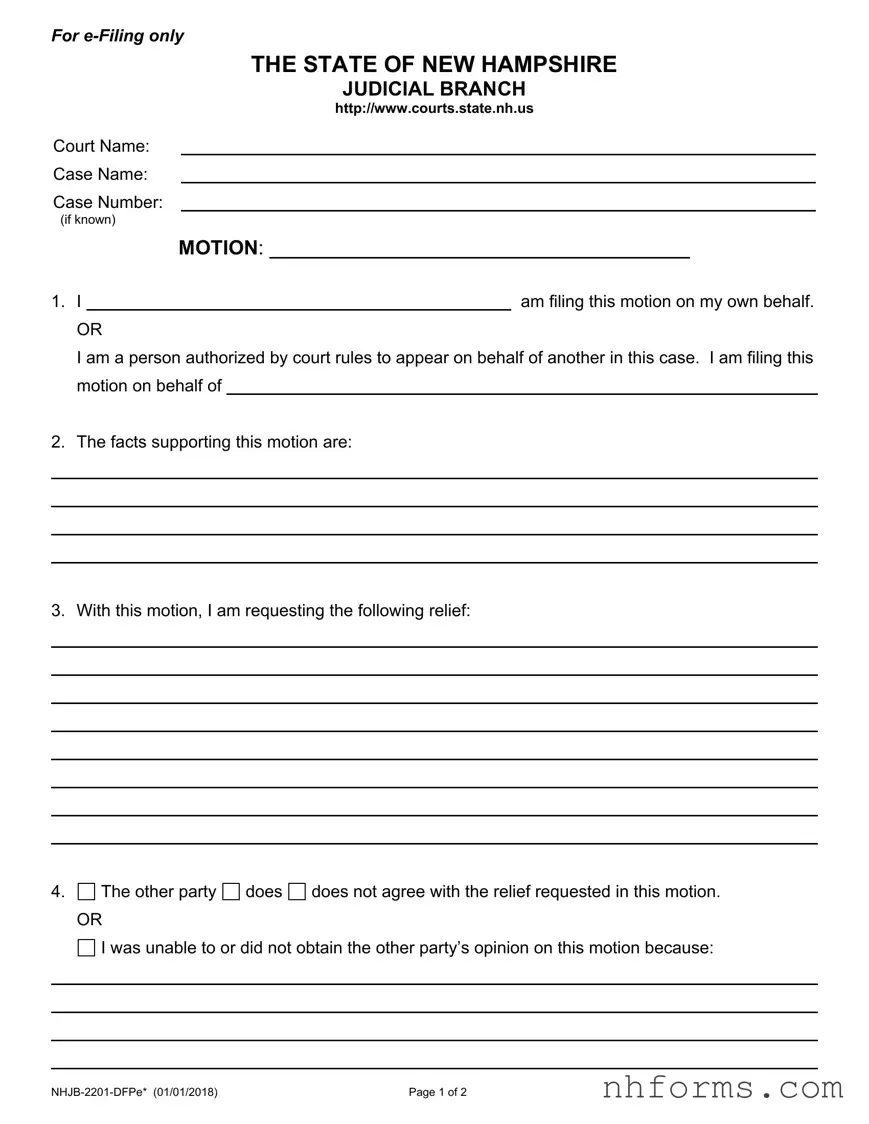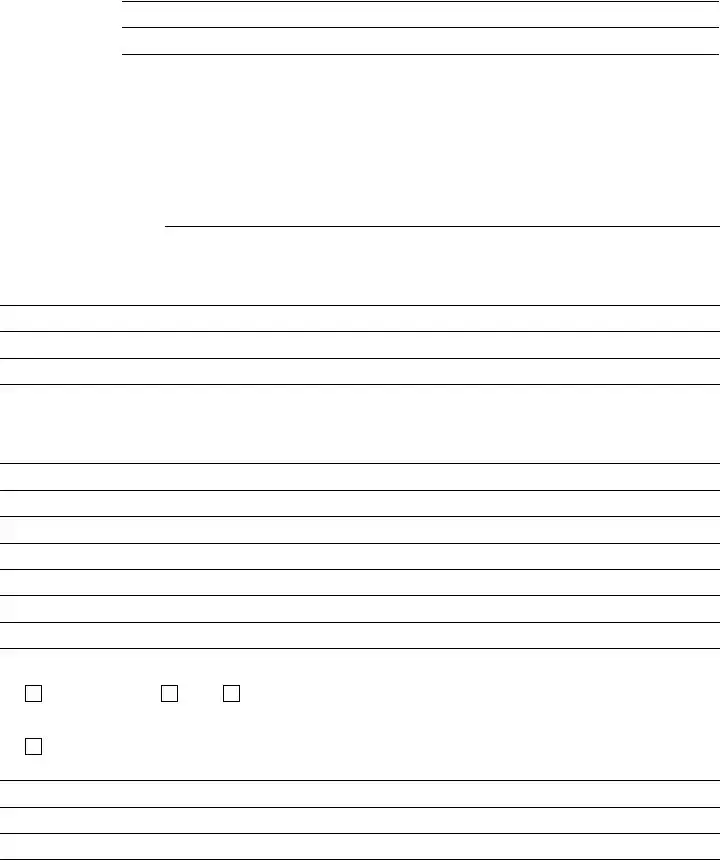What is the New Hampshire form for?
The New Hampshire form, specifically the NHJB-2201-DF, is utilized for submitting motions within the judicial system of the state. It allows an individual to state facts and request specific relief pertaining to a case. This might include requests for court orders or changes to existing orders.
How can I deliver this form?
The form can be delivered by hand or sent to the other party's attorney via US Mail. Additionally, with prior agreement based on the Circuit Court Administrative Order, it can be delivered by email.
Is there a need to provide a copy of this document to the other party or their attorney?
Yes, it's obligatory to provide a copy of the document to the other party or their attorney. This ensures that all parties are aware of the motions being filed and have an opportunity to respond.
What information needs to be included in the motion section?
In the motion section, the individual filing the form must clearly state the facts of the case and the specific relief they are requesting from the court. This section should be as detailed as possible to fully inform the court and the opposing party.
What happens after the motion is filed?
After the motion is filed, it will be reviewed by a marital master or judge who will then make a decision. The decision can either grant or deny the motion. If the motion is granted, the requested relief will be applied to the case.
Who can sign the motion?
The individual filing the motion must sign and date the form. If the motion pertains to a legal representation, the attorney handling the case would sign it.
What is the significance of the judge's certification at the bottom of the form?
The judge's certification confirms that the judge has reviewed the marital master's recommendation and agrees that the correct legal standard has been applied to the facts as determined. This is a crucial step in ensuring that the decision is fair and based on accurate information.
Can the order be appealed if the motion is denied?
If the motion is denied, the individual who filed the motion may have the option to appeal the decision, depending on the circumstances and the specific rules of the court. Such actions should be considered carefully and, ideally, discussed with a legal professional.




 I am filing this pleading on my own behalf. The information contained in this pleading is true to the best of my knowledge and belief. I understand that making a false statement in this pleading may subject me to criminal penalties.
I am filing this pleading on my own behalf. The information contained in this pleading is true to the best of my knowledge and belief. I understand that making a false statement in this pleading may subject me to criminal penalties.
 I am an attorney filing this pleading on behalf of my client or I am a person authorized by court rules to appear on behalf of another. To the extent this pleading contains facts not apparent in the case file, I am attaching an affidavit or statement signed under penalty of criminal prosecution attesting to the truth of those facts.
I am an attorney filing this pleading on behalf of my client or I am a person authorized by court rules to appear on behalf of another. To the extent this pleading contains facts not apparent in the case file, I am attaching an affidavit or statement signed under penalty of criminal prosecution attesting to the truth of those facts.
 I state that on this date I am sending a copy of this document as required by the rules of the Circuit Court. I am electronically sending this document through the court’s electronic filing system to all attorneys and to all other parties who have entered electronic service contacts (email addresses) in this case. I am mailing or
I state that on this date I am sending a copy of this document as required by the rules of the Circuit Court. I am electronically sending this document through the court’s electronic filing system to all attorneys and to all other parties who have entered electronic service contacts (email addresses) in this case. I am mailing or